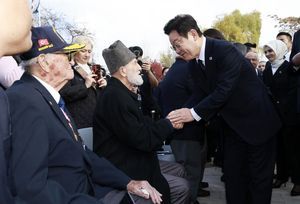First airborne operation performed in the Iraq War
In January 1995, the U.S. 17th Airlift Squadron was established, marking the inception of the first squadron comprising C-17As, which subsequently entered operational service. Presently, the U.S. Air Force’s C-17As are under the operation of the Air Mobility Command. The C-17A made its combat debut during Operation Northern Delay in 2003, a component of Operation Iraqi Freedom, where approximately 1,000 U.S. airborne troops conducted an airborne drop, marking the aircraft’s inaugural airborne operation.
Initially manufactured by McDonnell-Douglas, production oversight shifted to Boeing following their merger in 1997. However, Boeing announced the cessation of the aircraft’s production line due to declining C-17 introductions resulting from U.S. federal budget reductions. Following the delivery of the final aircraft, the 279th, in 2015, Boeing terminated production after two decades.
Consequently, the U.S. military received 223 C-17As, while 34 were exported to various countries worldwide. The C-17A found procurement in over seven nations beyond the U.S. In addition to the U.S. Air Force, it is utilized by the Royal Air Force of the United Kingdom, the Royal Australian Air Force, the Royal Canadian Air Force, and NATO forces. Furthermore, India, Kuwait, Qatar, and the United Arab Emirates (UAE) also operate the C-17A.

So why would the North Korean command be on high alert when a C-17A transport aircraft takes off from the U.S. mainland?
According to the U.S.-South Korea Combined Operation Plan 5015, the U.S. B-52H bomber is designated to launch numerous missiles from the Jeju southern sea area as a cruise missile launch platform. Consequently, the B-52H routinely engages in training exercises on the Korean peninsula to execute such launches from the southwestern sea area of Jeju, per the operation plan.
However, during recent training sessions, there has been heightened speculation both within and outside the military due to the presence of a mysterious transport aircraft observed accompanying the B-52H. Despite being overshadowed by the presence of F-22s and B-52H bombers, this aircraft has sparked concerns as it is perceived to pose a more significant threat than the B-52H bomber.
The aircraft, characterized by a distinct yellow band and blue square box on the vertical fin, has been identified as belonging to the 315th Airlift Wing stationed at Joint Base Charleston in South Carolina, USA. This unit, operating under the U.S. Air Force Reserve Command (AFRC), utilizes the C-17A transport aircraft for troop and cargo transport missions.
However, since 2021, these aircraft have also been equipped for the missile carrier role by implementing the Rapid Dragon system. This system involves modifying standard air cargo pallets into munition deployment devices, enabling transport aircraft to deploy munitions mid-flight.
This launch device carries GPS-guided bombs such as JDAM or the stealth long-range cruise missile known as JASSM. This specialized pallet, measuring 17 feet (5.2 meters) in length and 8.5 feet (2.6 meters) in width, can accommodate up to nine JASSM missiles.










Most Commented